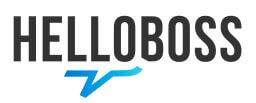
This course provides students with the skills and knowledge required to successfully create and maintain the Cloud and Edge parts of an Azure IoT solution. The course includes full coverage of the main Azure IoT services such as IoT Hub, Device Provisioning Services, Azure Stream Analytics, Time Series Insights, etc. In addition to the focus on Azure PaaS services, the course includes sections on IoT Edge, device management, monitoring and troubleshooting, security issues, and Azure IoT Central.
Module 1: Introduction to IoT and Azure IoT Services In this module, students will begin by examining business considerations for various IoT implementations and examine how the Azure IoT reference architecture supports IoT solutions. This module also provides students with an overview of the Azure services commonly used in an IoT solution and provides an introduction to the Azure portal. Commercial Lessons for IoTI Introduction to the architecture of the IoTIoT solution Hardware and Cloud ServicesLab Scenarios for this CourseLab : Getting started with AzureLab: Parameter started with Azure IoT ServicesAfter completing this module, students will be able to: Explain how IoT and Azure IoT could be applied to their business Describe the main components of an Azure IoT solution architecture Describe Azure IoT services and how they relate to an IoT solution Create an Azure account and use the Azure portal To create an IoT hub and a DPS service
Module 2: Devices and communication with devices In this module, students will take a closer look at the Azure IoT Hub service and learn how to configure secure two-way communication between the IoT Hub and devices. Students will also learn about the functionality of IoT Hub, such as device twins and IoT Hub endpoints, which will be explored in more depth during the course. Lessons IoT Hub and DevicesIoT Developer ToolsDevice Configuration and CommunicationLab: Setup The Development EnvironmentLab: Connect IoT Device to Azure After completing this module, students will be able to: Explain the main features of IoT Hub services Describe the lifecycle of a Azure IoT device Describe how the IoT The hub manages device identities and implements other security features Register devices with the IoT hub using the Azure portal, Azure CLI and Visual Studio code Implement the IoT Hub Device SDKs and Service
Module 3: Provisioning of devices at scale In this module, students will focus on the provisioning of devices and how to configure and manage the Azure Device Provisioning service. Students will learn the registration process, automatic provisioning and replenishment, unsubscribing and how to implement various certification mechanisms. Lessons Device Provisioning Service Terms and Concepts Configure and manage device provisioning serviceProvisioning Tasks Devices: Lab: Individual Device Registration in DPSLab: Automatic Device Registration in DPS After completing this module, students will be able to: Explain the device provisioning process and the functionality of the Device Provisioning Service Explain security considerations associated with device provisioning and how they are managedImplement device provisioning SDK Manage the device enrollment process, including provisioning and deregistration
Module 4: Message Processing and Analysis In this module, students will examine how the IoT Hub and other Azure services can be used to process messages. Students will begin with a survey on how to configure routing of messages and events and how to implement routing to integrated and custom endpoints. Students will learn about some of the Azure storage options that are common for IoT solutions. To complete its module, students will implement Azure Stream Analytics and query a number of ASA models. Lessons Messages and message processing Data storage options Azure Stream AnalyticsLab: Device Message RoutingLab: Filtering and aggregation of message dataAfter completing this module, students will be able to: Configure message and event routing Route data to integrated and custom endpoints Implement message enrichment Implement Azure Stream Analytics inputs, queries and outputs Store message data in a hot storage for historical purposes and additional analysis.
Module 5: Use an Azure function of message processing and analysis solution: Insights and Business Integration. In this module, students will learn about Azure services and other Microsoft tools that can be used to generate Business Insights and activate business integration. Students will implement Azure Logic Apps and Event Grid, and they will configure data connection and transformations for data visualization tools such as Time Series Insights and Power BI. Lessons Business integration for IoT solutions Data visualization with Time Series Insights Data visualization with Power BILab: Integrate IoT Hub with Event GridLab: Explore and analyze time-stamped data with Time Series Insights After completing this module, students will be able to : Explain the options for commercial integration in an IoT solution and how to realize them Develop support for commercial integration using logical applications and the event grid Configure the IoT data for visualization in Time Series Insights Configure IoT data for visualization in Power BI
Module 6: Azure IoT Edge deployment process In this module, students will learn how to deploy a module to an Azure IoT Edge device. Students will also learn how to configure and use an IoT Edge device as a gateway device. Lessons Introduction to Azure IoT EdgeEdge Deployment process Edge Gateway DevicesLab: Introduction to IoT EdgeLab: Configure an IoT Edge gateway After completing this module, students will able to: Describe the difference between an IoT device and an IoT Edge device Configure an IoT Edge device Implement an IoT Edge deployment using a deployment manifest Configure an IoT Edge device as a gateway device
Module 7: Azure IoT Edge Modules and Containers In this module, students will develop and deploy Edge Modules and will implement support for an offline scenario that relies on local storage. Students will use Visual Studio code to create custom modules as containers using a supported container engine. Custom Offline and Local StorageLab Development Course: Development, Deployment and Debugging a custom module on Azure IoT EdgeLab: running an IoT Edge device in a restricted network and Offline After completing this module, students will be able to: Explain the requirements for building a custom Edge module Configure the code Visual Studio to develop containerized modules Deploy a custom module on an IoT Edge device Implement local storage on an IoT Edge device Using an offline scenario
Module 8: Device management In this module, students will learn how to implement device management for their IoT solution. Students will develop device management solutions that use devoice twins and solutions that use direct methods. Lessons Introduction to IoT device management Manage IoT and IoT Edge devices Device management on ScaleLab: monitor and control devices remotely with Azure IoT HubLab: automatic device management After completing this module, students will be able to: describe the models management tools and the most common configuration best practices and how to use device twins and direct methods to implement device management implement device management for various models using device twins and direct methods implement device management at scale using automatic device and job management
Module 9: solution testing, diagnostics and logging and diagnostic tools that help developers test their IoT solution. Students will use IoT Hub and Azure Monitor to configure alerts and track conditions such as device connection status which can be used to troubleshoot. Lessons Monitoring and LoggingTroubleshootingLab: Configure Metrics and Logs in Azure IoT HubLab: Monitor and Debug Connection Failures After completing this module, Students will be able to: describe the monitoring and logging options for an Azure IoT solution configure Azure Monitor to support an IoT solution configure the IoT Hub metrics to support a IoT solution implement diagnostic logging Troublehoot IoT Device Connection and communication issues
Module 10: Azure Security Center and IoT Security Considerations In this module, students will examine the security considerations that apply to an IoT solution. Students will begin by studying security as it applies to solution architecture and best practices, and then see how Azure Security Center for IoT supports device deployment and IoT Hub integration. Students then use Azure Security Center for IoT agents to improve the security of their solution. Security basics for IoT solutions Introduction to Azure Security Center for IoTEnhance protection with Azure Security Center for IoT AgentsLab: Implementation of Azure Security Center for IoTA After completing this module, students should be able to: describe the problems Security and Best Practices for an IoT Solution Describe the Azure IoT Security Architecture and Threat Modeling Describe the Features and Support Provided by Azure Security Center for IoT Configure Security Agents and Aggregate Twins Security Module Azure Security Center for IoT Events module 11: creating an IoT Solution with IoT CentralIn This module, students will learn how to configure and implement Azure IoT Central as a SaaS solution for IoT. Students will start with a high-level survey of IoT Central and how it works. With a basic understanding of IoT Central Establish, students will move on to creating and managing device models, then managing devices in their IoT Central application. Lessons Introduction to IoT CentralCreate and manage device modelsManage devices in Azure IoT CentralLab: Getting started with Azure IoT CentralLab: implementing IoT solutions with Azure IoT Central After completing this module, students will be able to: describe the difference between Azure IoT Central and PaaS Azure IoTDescribe services provided by Azure IoT CentralDescribe the purpose and components of a device modelCreate and publish a device modelManage devices using rules and notifications
Software development experience: Software development experience is a prerequisite for this course, but no specific software language is required, and experience does not need to be professional. Experience in data processing: a general understanding of data storage and processing is recommended but not required. Knowledge of cloud solutions: students must have a basic understanding of PaaS, SaaS and IaaS implementations. Microsoft Azure Fundamentals (AZ-900), or equivalent skills, is recommended.
Good to know
Automagically translated from French
Where does it take place?
Elgon
6 Rue d'Arlon
Windhof
Luxembourg
You could like it :

find out about all the networking events and trainings tailored for you!
find out about all the networking events and trainings tailored for you!






